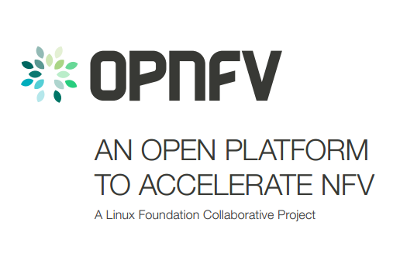Network Function Virtualization goes open source

In 2014, companies and open source programmers alike are working as hard as they can to virtualize hardware into software. The latest example of this is Network Functions Virtualization (NFV).

The name of the NFV game is to take such appliances or server-based network operations as Network Address Translation (NAT), firewalls, intrusion detection, and Domain Name Service (DNS) and move them to virtual machines. Of course, there are all kinds of ways to do this on a single server, but NFV takes it far beyond that to a level where an entire carrier's network services can be deployed and managed virtually.
Featured
To turn this idea into reality, almost 40 telecomm and network companies, such as AT&T, Cisco, HP, NTT DOCOMO, Telecom Italia and Vodafone, joined forces with The Linux Foundation to create a new collaborative project: Open Platform for NFV, (OPNFV). The ultimate goal to build a carrier-grade, integrated, open source NFV reference platform.
Not everyone who supports NFV is on board with this new effort. Telefonica SA (an early open source NFV advocate), BT, and Verizon are all noticeably absent.
But, according to the Foundation, "While not developing standards, OPNFV will work closely with ETSI’s NFV ISG [NFV's standardization organization], among others, to drive consistent implementation of standards for an open NFV reference platform." In short, the other major companies working on NFV may not be members of OPNFV, but OPNFV isn't going to try to steer its own course away from the ETSI. In time, Jim Zemlin, the Linux Foundation's Executive Director, expects other telecomm and networking companies to join OPNFV.
The initial focus of OPNFV will be on building NFV infrastructure (NFVI) and Virtualized Infrastructure Management (VIM), leveraging existing open source components where possible. These, Zemlin said, include OpenDaylight (software defined networking), OpenStack, Open vSwitch and the Linux kernel
The project's first objectives are to:
- Develop an integrated and tested open source platform that can be used to investigate and demonstrate core NFV functionality
- Include proactive participation of leading end-users to validate that OPNFV meets the needs of the end-user community
- Contribute to and participate in relevant open source projects that will be leveraged in the OPNFV reference platform
- Establish an open ecosystem for NFV solutions based on open standards and open source software
- Promote OPNFV as the preferred open reference platform.
Further, as Zemlin explained in his blog, "OPNFV is similar to Linux distributions in that it will work with 'upstream' open source projects. … The result will be the best possible reference platform for NFV. We expect contributions to this project to come in many forms, ranging from code development to performance-testing resources and documentation. We also expect, like Linux, that OPNFV will provide a platform on top of which a wide variety of offerings will be made available."
AR + VR
So, as Linux has become the basis for different distributions, such as Red Hat Enterprise Linux, openSUSE, and Ubuntu, so OPNFV will have its own "distributions." It will a while before we see these. At this point, according to Zemlin, the first programmer' meetings are just happening and the group still needs to decide on how and where to test the reference architecture.
Still, as Andrew "Andy" Updegrove, a founding partner of Gesmer Updegrove, a top technology law firm and standards expert pointed out, it's a worthwhile goal. "The collaboration of such a broad array of stakeholders from the start is important [since] Carrier grade software must be unusually robust."
With so many companies united on the need for an open source NFV implementation, and considering the success to date of so many other open source projects, I think there's every reason to believe OPNFV will be a success.
As Updegrove wrote, the open source, multi-group project method "provides a way to short cut a process that previously – using standards alone – would make such transitions more laborious, lengthy, and uncertain. That’s true not only in isolation (i.e., within a given project), but systemically as well, since OPNFV will work in concert with other equally significant open source projects, such as Open Stack, OpenDaylight (another Linux Foundation project) and Open vSwitch to ensure that code can be integrated up and downstream in a growing, pervasive ecosystem of industrial strength open-source code."
Related Stories: